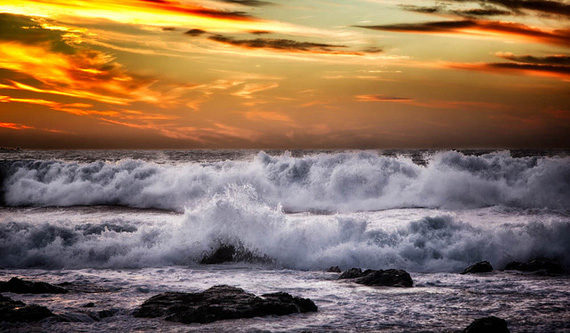Is your camera gathering dust right now? Is it because you can’t think of anything to take pictures of? Then you’ve caught the photo doldrums! What’s the remedy? It’s quite possibly something very simple—you need to start shooting the ideal photo subject.
” No other subject offers a… photographer such a range of possibilities for documentary and interpretive images, and few subjects are as easy to find.” –Freeman Patterson, Photography of Natural Things

Photo by Stewart Baird; ISO 250, f/7.1, 1/100 exposure.
What is this ideal photo subject for overcoming the photo doldrums? Would you believe, water? But most photographers pass right by water when they seek something ‘special’ or ‘different’ to photograph. Why is that? In a word, familiarity. It acts as a mental blinder that prevents them from seeing excellent photo-ops that are right in front of them.
So, my very first photography tip for solving the photo doldrums is this: ask yourself just one simple question, “Which way to the water?” Now, here are some more photography tips to help you determine directions.
Water’s Warm Season Photo Ops
Is there a river, lake, or ocean nearby? If so, you have what you need for the following photography tips to help you start getting over your photo doldrums:
1. Waves. Waves come in a wide variety of sizes, from ripples to tsunamis. Depending on the situation they can be shot either head-on or along their length as they curl and break. Fast shutter speeds freeze the action. Slower speeds create soft nebulous effects.
2. Waterscapes. When composing water-only or mostly-water pictures, you need to see the water within the viewfinder graphically—as just colors, tones, lines, shapes, etc. And you need to articulate the idea or mood that it evokes for you. Then you’ll know which camera position, lens, etc. is best for the final picture.
Whereas landscape photography usually calls for facing the camera either north or south (for sidelight modelling and polarizing effects), with waterscapes you can also shoot directly toward the sun and still get very attractive images, thanks to water’s unique properties. Just remember to compensate your light meter’s recommendations by +1 to +2 stops when doing so.

Photo by Tore Bustad; ISO 200, f/11, 0.8-second exposure.
3. Waterfalls. Waterfalls allow for a wide variety of pictures. Slow shutter speeds make the water silky smooth and soft looking. Fast shutter speeds not only freeze it but also reveal patterns in the ebb/surge and unusual shapes in it. Colors and patterns may be reflected from nearby surroundings and strong contrasts can be found between the water, boulders and stones, leaves and twigs, etc.
Self-Assignments for Photography Water
Choose the projects that interest you most. Follow the photography tips conscientiously. Re-shoot when you aren’t satisfied. Do it until you are satisfied. It’ll take all your patience and passion. Your skills and eye will improve with the practice. Shoot especially in early and late light. Use a tripod as much as possible. Edit your results relentlessly. Pin small samples on the wall for a few days to study before making final prints for wall art.
Waves. First, study some online examples for pointers. Then shoot a single wave as it breaks, either head-on or else looking along its length. Use shutter speed of 1/250 of a second or faster to freeze action.
Waterscapes. Locate a nearby body of water. Go there. Study just the water for a while. Then compose a picture that includes only the water, perhaps a ripple pattern, or a section of varying colors, etc., and include something in or on the water as a center of interest to place your main focus.
Waterfalls. Locate a nearby stream or river with a falls or a stretch of rapids. Find a section of water that includes a rock (etc.) and reflections of things on the shore or overhead. Shoot with a slow shutter speed of 1/15 of a second or slower.

Photo by Andrés Nieto Porras; ISO 320, f/9, 30-second exposure.
In the next of this article set of six, we’ll cover still more photography tips about water’s warm season photo ops for overcoming the photo doldrums: reflections, abstracts, splash ‘n spray, foam ‘n bubbles.
About the Author:
John Maxymuik authored this article which is 1 of a set of 6 on Photography Tips for the Photo Doldrums providing tips to break the grip of the photo doldrums using the “ideal photo subject”. Maxymuik previously operated a website at ambienceimages.
Like This Article?
Don't Miss The Next One!
Join over 100,000 photographers of all experience levels who receive our free photography tips and articles to stay current:




I am thankful to the auther for giving tbhe settings to the photograph. The photographs themselves were approp[riate and having the settings were relly helpful.I wish all authers discuss the photos they give in their writeups.
I think it will also depend on the waterfall subject. Some waterfalls are so great to look at while others looks like just ordinary.
Thanks for the tips!. I do have photos of waterfalls taken during my last vacation. Might as well try to enhance it. Thanks!